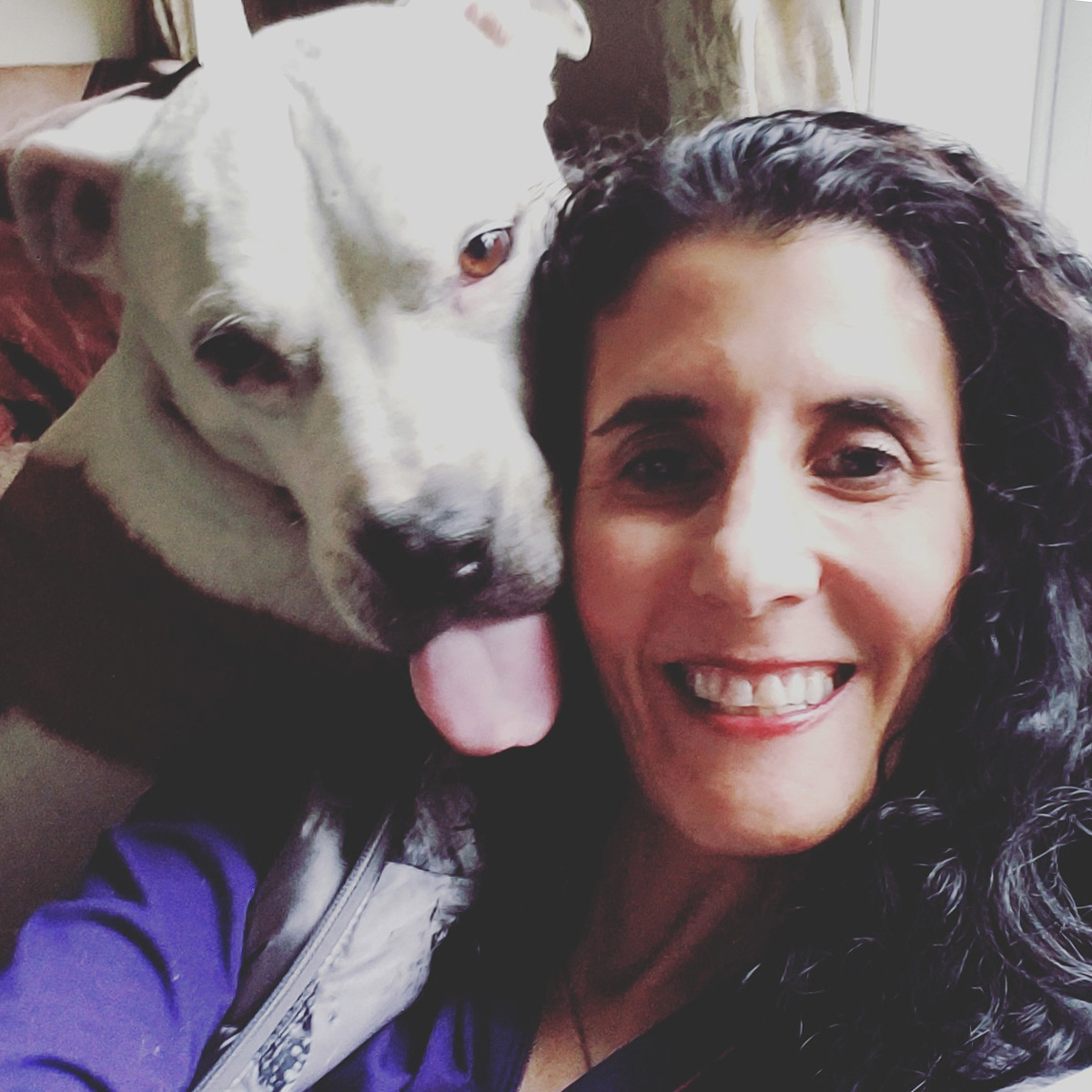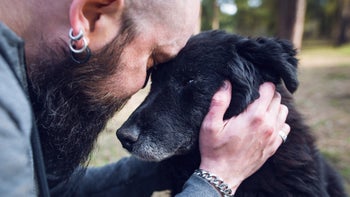
7 Symptoms of Arthritis in Dogs, and How You Can Help Your Pup
Key takeaways:
Arthritis affects 1 in 5 dogs. Its symptoms can include difficulty getting up, not being as playful as usual, and having trouble with stairs.
There is no single cause for arthritis in dogs. Rather, several factors make certain dogs vulnerable to developing the condition.
If your dog displays these signs and behaviors, they may be in pain and should visit the veterinarian.

Arthritis, also known as degenerative joint disease or osteoarthritis, is a condition involving inflammation and deterioration of the joints. Arthritis doesn’t only affect older dogs. Under certain circumstances, arthritis can affect young dogs too.
Could your dog have arthritis? Below, we’ll cover the most common arthritis symptoms in dogs, as well as how you can help your pup.
Symptoms of arthritis in dogs
Here are seven common signs of arthritis in dogs.
Search and compare options
1. Limping
Limping, stiffness, or lameness that occurs gradually over time can be caused by a chronic, degenerative issue such as arthritis. You might notice your dog relying on one leg over another if the joints in one leg are more arthritic. Pay attention to when you see the limp and when it seems more severe. For example, the limp may be more noticeable when your dog gets up and the leg is stiff.
2. Difficulty getting up or standing up from a lying position
Reluctance to get up from a lying position is one of the top signs of arthritis in dogs. Your pup’s joints may be achy, stiff, and sore. Joint problems like arthritis can cause pain, making it difficult for your dog to get up and down.
Additionally, your dog may struggle with traction on hardwood floors and tile surfaces. Consider putting nonslip rugs on hard floors if your dog has trouble finding footing.
3. Hesitation climbing stairs
Your dog may have more trouble climbing stairs or doing other activities that were previously easy. They may take longer to climb the stairs, or perhaps your dog pauses before they jump onto your couch or the bed. These can indicate that your furry friend is struggling with pain due to joint mobility.
Quiz: Is your dog in pain?
4. Reluctance to run, jump, and play
Does your dog lack interest in activities they have always enjoyed, such as running, playing fetch, or going for a walk? If so, your dog might be experiencing arthritis-related pain.
With arthritis, the protective cushion between the joints breaks down. This causes inflammation and a decreased range of motion, making everyday movements painful.
Joint relief: Learn about common treatments for arthritis in dogs, including medications and natural remedies.
What is it like to care for a dog with arthritis? Read how one pit bull owner manages her dog’s joint pain with a once-a-month shot.
Do supplements work? Some supplements can help prevent and manage joint inflammation in dogs. Learn which ones to try and which to avoid.
5. Irritability or change in behavior
A dog with arthritis may be irritable and aggressive toward other dogs or humans. If a previously friendly dog shows signs of aggression, such as growling, hissing, or biting, this is often a sign the dog is in pain. Your dog’s irritability may worsen if you handle them in a way that increases the pain.
6. Loss of muscle mass
Muscle atrophy — the loss or wasting of muscle — is common in dogs as they age or if they have arthritis. Loss of muscle mass frequently occurs as dogs become less active. Loss of muscle tends to be most noticeable in the hind legs.
The first symptom you will likely notice is that it will be more difficult for your dog to walk. Their hind legs may appear thinner, and they may use their front legs to overcompensate. You might also notice that they have lost weight or their muscles feel flabbier to the touch.
Read more like this
Explore these related articles, suggested for readers like you.
7. Tiredness
If your dog would prefer to lie in one place or sleep rather than take their usual walk or follow you around, you know they’re not feeling like themselves. This can also be a sign of arthritis and arthritis-related pain.
What triggers arthritis in dogs?
There is no single cause for arthritis in dogs. Instead, a combination of the following factors can predispose your dog to arthritis:
A large build
Repetitive stress from athletic activities
Abnormal joint development
A history of conditions like hip dysplasia, elbow dysplasia, or luxating patellas
Past injuries, such as fractures, ligament tears, or surgery
Poor nutrition
History of illness that affects the joints, such as Lyme disease
Genetics
Most dogs who develop arthritis have a combination of these factors.
How is arthritis in dogs diagnosed?
If your dog shows any signs of arthritis, visit a veterinarian. They will thoroughly examine your dog and touch various joints to determine where and how severe the pain is. Additional diagnostic images, such as X-rays, may be needed. These will help the vet determine the damage to the affected joints.
What arthritis treatment options are available for dogs?
There are different options available to treat arthritis in dogs. Once your veterinarian confirms the diagnosis, they will work with you to create a management plan that suits your dog.
The most common ways to manage arthritis in dogs can involve the following:
Diet and supplements that meet your dog’s needs (this may include food and joint supplements prescribed by a veterinarian)
Exercise to prevent the progression of joint damage
Weight management
Pain medications, such as gabapentin or nonsteroidal anti-inflammatory drugs (NSAIDs)
Physical therapies, such as hydrotherapy (water therapy)
Alternative treatments, such as shockwave treatment, acupuncture, or laser therapy
Surgery if necessary
Remember, never give human pain medications to your dog. Human medications like naproxen sodium (Aleve) and ibuprofen (Advil, Motrin) are toxic to pets.
Frequently asked questions
The four stages of dog arthritis are:
Stage 1: Few to no signs of arthritis, but has risk factors
Stage 2: Mild osteoarthritis with symptoms, such as limping or joint swelling
Stage 3: Moderate osteoarthritis with symptoms, such as a reluctance to move or climb stairs
Stage 4: Severe osteoarthritis with symptoms, such as refusal to move and depression or aggression due to discomfort
Walks for dogs with arthritis are recommended to curb weight gain and loosen stiff joints. Other exercises that might benefit your dog include swimming, scent detecting, and outings with you to shops.
Arthritis is one of the most common issues in middle-aged and older dogs. About 1 in 5 dogs are diagnosed with arthritis in their lifetime. It is most common in older dogs and large-breed dogs.
The bottom line
Dogs with arthritis experience pain and inflammation in their joints that interfere with their daily activities. Common dog arthritis symptoms include difficulty getting up from lying down, being less active than usual, and being more irritable. There is no cure for arthritis. But with appropriate management, your dog can live their best life.
Why trust our experts?



References
American Animal Hospital Association. (2007). How to tell if your dog is in pain.
American Kennel Club Canine Health Foundation. (2011). Managing canine arthritis.
American Veterinary Medical Association. (n.d.). Lyme disease in dogs.
Boehringer Ingelheim. (n.d.). Mobility matters: A practical guide to recognizing and managing osteoarthritis in dogs and cats. American Animal Hospital Association.
Burns, K. (2020). Getting ahead of osteoarthritis in pets. American Veterinary Medical Association.
Canine Arthritis Resources and Education. (n.d.). Activity modifications for dogs with arthritis.
Colorado State University James L. Voss Veterinary Teaching Hospital. (n.d.). Arthritis management and prevention.
Fingeroth, J. (2024). Hip dysplasia in dogs - background, signs and diagnosis. Veterinary Partner.
Gibson, T. (2019). Evidence for canine rehabilitation and physiotherapy. World Small Animal Veterinary Association Congress Proceedings.
Lundgren, B. (2019). Arthritis in dogs and cats: What can be done? Veterinary Partner.
Pagano, T. B., et al. (2015). Age related skeletal muscle atrophy and upregulation of autophagy in dogs. Veterinary Journal.




























